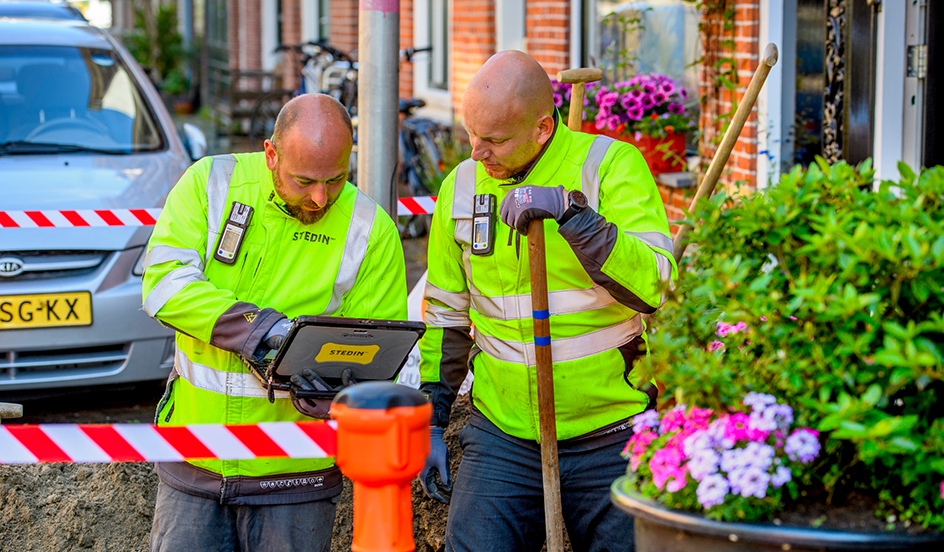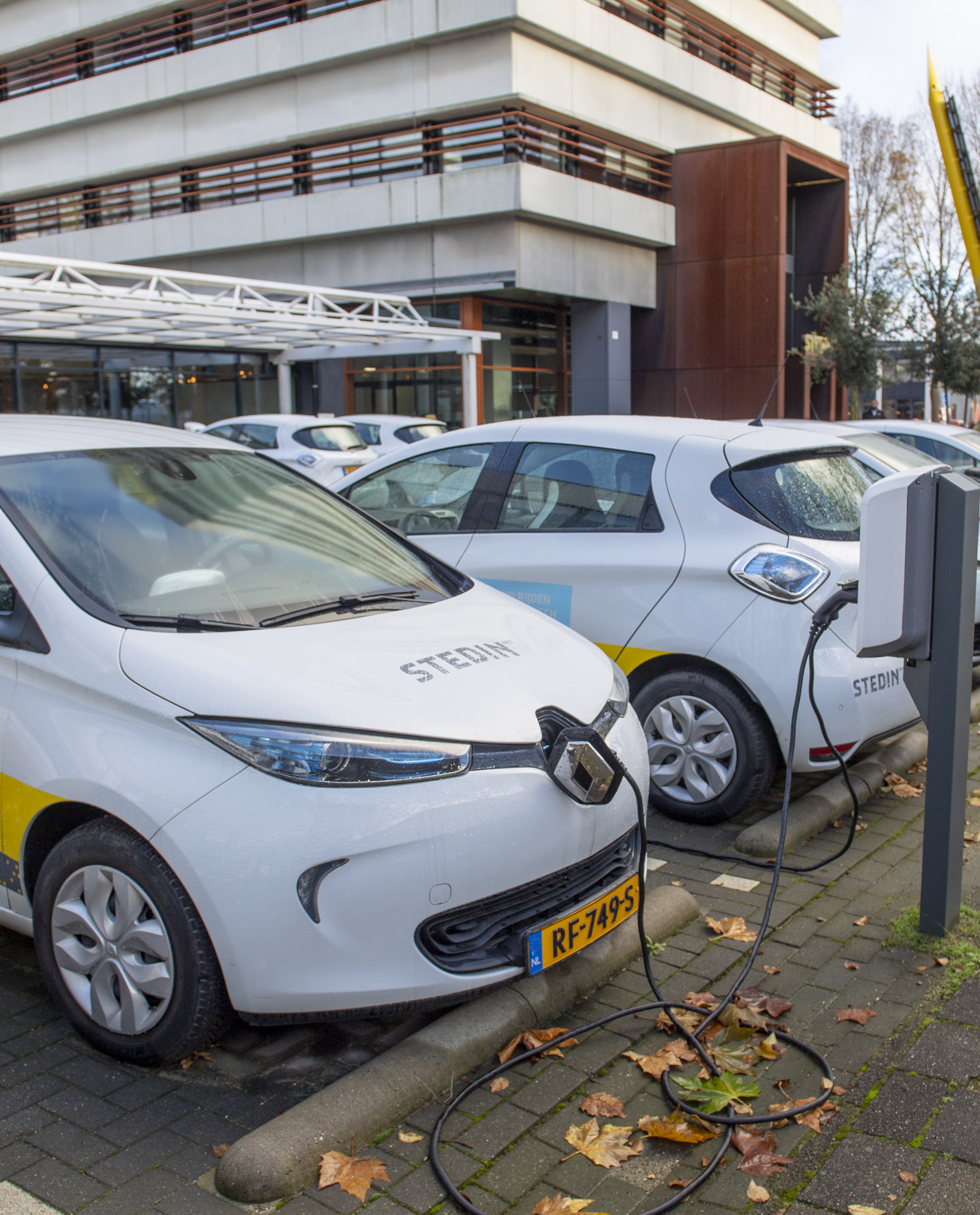Strategy: grid access for all
Our aim is to give everyone in our service area access to the grid. To make that possible, we will need to expand our grid capacity and maintain the high quality of our grid. This is our social mandate, as well as the core of our new strategy for the period 2023-2027. We do this through construction, utilisation and management. Our reporting in this annual report is structured on the basis of these three pillars.
The energy transition is one of the greatest challenges the Netherlands has ever faced. Energy production is rapidly becoming more sustainable and electricity consumption is rising steeply. At the same time, we are maintaining the quality of our energy grid and preparing the gas grid for the distribution of renewable gases. This, too, is part of the energy transition.
New energy systems
The Netherlands is moving from a fossil energy system to a sustainable energy system. From energy generated centrally at a power station to energy generated locally by solar panels or offshore wind turbines. This requires giving more thought to how we use energy. Throughout the Netherlands, sustainable energy should as much as possible be used near to where and when it is generated. By using smart technologies, we can keep the energy system balanced even when there is no wind or sunshine. We will be supplying all of this new energy to our customers via our grids. Because this is what we do: working together to create an environment filled with new energy. We help achieve the Dutch sustainability ambitions and are working on the energy system of the future: a challenge of unprecedented magnitude! We do this with an eye for the environment around us.
The energy system of the future requires a well-functioning grid. A high-quality grid with sufficient capacity. That is what we will be focusing on in the coming years. We will speed up construction, improve the utilisation of grids and continue their reliable management. Everything we do will contribute to these goals.
Ensuring grid capacity
Construction: we are laying even more cables and pipes and building additional stations. In this way, we can connect our customers to our energy grid, including new customers and electricity generators.
Utilisation: construction alone will not suffice. We will improve the utilisation of the grid by optimally matching supply and demand, and by using the available grid capacity in the smartest possible way. This will reduce grid congestion.

Ensuring grid quality
Management: we want to maintain the quality of our performance. Among other things, we do so by safeguarding the quality of our energy grid. Our top priority is to continue to ensure a reliable and safe energy supply.

We do this together
Prioritising one thing sometimes comes at the expense of something else. That also applies to focusing on our grids. But at the same time, it also offers opportunities. Opportunities for innovation, for example. We are discovering new, faster and more effective methods of construction. We are developing smart, flexible solutions and are embracing digitalisation. Everyone at Stedin contributes to this process, as does our environment. Many customers and energy entrepreneurs want to help us make the most of our grid; these include commercial growers, customers with controllable solar and wind farms, and customers with large-scale storage capacity. Opportunities also abound for companies that are sharing ideas with us for accelerating the expansion of the grid, by means of co-creation with parties such as water and infrastructure companies.
With an eye for our environment
On our way towards an ESG-driven organisation, we recalibrated our ESG strategy at the end of 2023. As part of this new ESG strategy, we formulated ambitious objectives with regard to the Environmental, Social and Governance aspects of our operations. For the period 2024-2030, we reserved € 150 million for this purpose.
Environmental: green & sustainable
We are accelerating the energy transition by speeding up construction and improving the utilisation of the existing grid. By doing so, we are helping to make the Netherlands more sustainable, but it does not fully justify the negative impact made by Stedin’s own operations. We are therefore looking for solutions to accelerate the energy transition while simultaneously ensuring that our operations have a less negative – or even a positive – impact on our environment. Where we encounter a dilemma, we make sharp policy choices. Realising the energy transition is our top priority. Doing this as sustainably as possible is important, but is a secondary factor. After all, the added value for society of realising the energy transition outweighs the sustainability gains that can be realised in our operations.
Climate change mitigation
Our old ambition was to move towards climate-neutral operations by 2030, as part of which we planned to make use (where required) of CO2 compensation. We now no longer support CO2 compensation, because the principle is debatable and moves the focus away from the causes of the problem. Our new ambition is therefore to reduce CO2 equivalents emissions.
Circularity and waste management
For us, circularity means in particular that we want to reduce the use of primary raw materials as much as possible. In order to achieve this, we are shifting the emphasis of our recalibrated strategy to the design phase. This is where we have the greatest influence on reducing the use of primary raw materials. The biggest gains can be made in the categories of cables and concrete for buildings. Reuse and waste management will also remain important.
Biodiversity
We endeavour to strengthen biodiversity. In this context, we have a significant impact on biodiversity especially in our supply chain. We will explore this further in 2024, in the expectation that many of our measures aimed at CO2 reduction and circularity will also have a positive effect on biodiversity in the supply chain. In addition, we will continue to work on biodiversity at and around our own stations.
Social: development, safe & inclusive
We want to reflect the world we work in and we want our workforce to be a reflection of the diversity in society. We therefore provide a workplace where everyone can be themselves, where staff members have room for ongoing development and safe working practices are a top priority, and we do everything in our power to increase the physical and mental wellbeing of our staff.
Good employment practices
In ensuring good employment practices, we are continuing to build on a solid foundation. We focus on the following material themes:
Training, learning and development
Health and safety
Diversity and inclusion
Governance: integrity & transparency
We do our work with integrity and transparency. Together with our stakeholders, we are working on sustainable value creation for the longer term. We take our responsibility for sustainable and fair working practices, both in our own organisation and in our collaboration with supply chain partners. We ensure ongoing compliance with the applicable laws and regulations and norms of behaviour.
A new element of good governance for Stedin is supply chain responsibility. This aspect will be further developed when there is new legislation on this point.
Our website tells you more about our ESG strategy and the steps we are taking in this regard.
CSRD
The Corporate Sustainability Reporting Directive (CSRD), with which Stedin must comply from financial year 2024, makes it compulsory for large companies to report on their sustainability performance. This includes reporting based on binding reporting standards, the European Sustainability Reporting Standards (ESRS), concerning themes where our operations have the greatest impact on the environment and society, and vice versa.
In preparation for these obligations, and because we as a social company find it important to be transparent about our sustainability performance, we have taken steps in respect of the adjustment of our governance and reporting organisation and our (double) materiality analysis, and have asked our external auditor to provide an assurance report for a selection of non-financial figures through which we reflect on 2023. In 2024, we will take the further steps required to ensure full compliance with CSRD.

